You arrive in Windhoek today where you will be met at the airport by Jason and your guide who will drive you into the city and to the the lovely Hotel Thule.
Here you can relax in the quiet surroundings before meeting the rest of the group for dinner
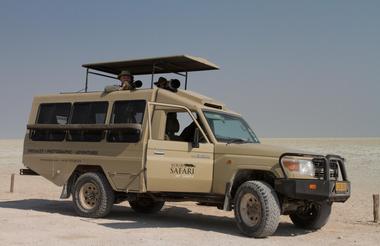

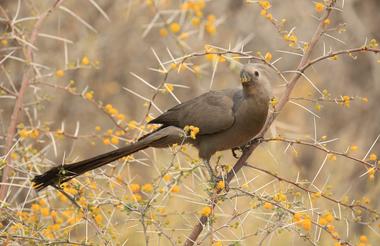
After an early breakfast we head north on the main tar road until we reach the gates of Okonjima, home of the Africat Foundation.
Here we will have the opportunity to spend time in the 54,000 acre reserve in search of leopards. Okonjima has both collared and uncollared leopards who live wild and free in the park along side numerous prey species.
Okonjima is a five star lodge with beautiful rooms , great food and unique wildlife experiences



2 leopard tracking activities ( upgrades to "A Walk with White Rhino" can be organised for a small supplement)
Following our early morning trail and a second chance to track leopards we will enjoy a hearty breakfast before leaving Okonjima and heading north on the tar road to eastern Etosha and Namutoni Camp where we will spend the next 3 nights.
The Namutoni side of Etosha is particularly good for all wildlife species but especially for large herds of elephant, big lion prides, giraffe are abundant here and it's the best place in the park to see cheetah.
For landscape photography the area surrounding the camp is also very good with close up views of the Etosha pan with its shimmering light and multicoloured bands



We leave Namutoni this morning and head west towards the centrally wooded area stopping at key waterholes along the way.
Our overnight stop is Halali Camp which is best known for its spectacular floodlit waterhole which sits in a natural amphitheatre. At sunset and into the night large elephant herds come to drink along with black rhino which emerge from the bush. It is also a good place to see the ever elusive leopard but you never know when they are going to turn up!



We move further west today to Etosha's largest camp, again, stopping at key waterholes along the way.
The area around Okaukuejo is mostly open plains with vast herds of herbivores trekking to the camp's own waterhole which is floodlit. We'll be staying in bungalows overlooking the waterhole so an opportunity for us to practice some night time photography as well as wildlife come to drink throughout the night.



We leave Etosha this morning after a final morning drive and head south on a good tar road to the Erongo Mountains before getting back on the gravel for the last hour en-route to the camp.
There is a change of seeing numerous wildlife species along the way and the scenery is spectacular
The area is dominated by huge granite boulders and the lodge is pretty remote so the skies should be clear for some astro photography after dinner

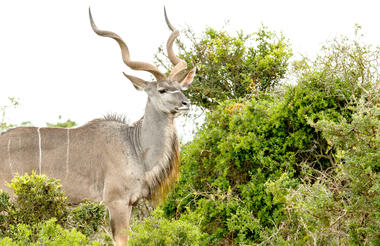

We head west today past Spitzkoppe which is a group of bald granite peaks or inselbergs in the Namib desert of Namibia. The granite is more than 120 million years old and the highest outcrop rises 5,669 ft above sea level. The peaks stand out dramatically from the flat surrounding plains.
Then we continue on to the Skeleton Coast and 2 nights in Swakopmund
There are lots of activities available in Swakopmund but for our group we would recommend a Living Desert tour where the guide drives you out into the huge sand dunes in search of the Namib's desert adapted wildlife such as Peringuay's Adder or Sidewinder, Namaqua Chameleon and Palmato Gecko followed by a trip south of nearby Walvis Bay along the beach to Sandwich Harbour. Here the Atlantic crashes straight onto the huge coastal dunes
Afternoons can be spent practicing your urban photography and seascapes or we can take a trip down to Walvis Bay lagoon to photograph the flamingos, pelicans and oil rigs along with the working harbour



You leave the coast this morning and head inland to the heart of the Namib Desert and some of the largest sand dunes in the world at Sossusvlei and Dead Vlei.
At sunset we'll drive to nearby Elim Dune and watch as the wildlife leave the open plains and head back into the safety of the dunes before night time. As they trek across the grasslands their shadows become unfeasibly long as the sun sets behind the mountains and the sociable weavers fly over your heads back to their enormous nests
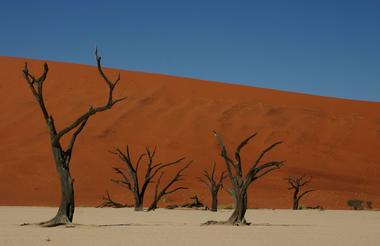
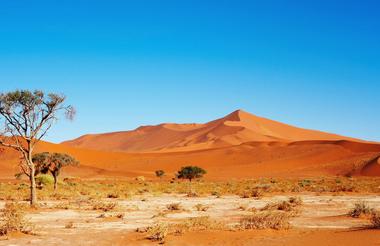
Sunrise drive to Dead Vlei and Sossusvlei
Quiver Tree Permits at Tsauchab River Camp
On day two we'll have a very early start to drive to the biggest sand dunes at Sossusvlei and Dead Vlei in time for sunrise and before people staying outside the gates get into the park.
The light is spectacular and the dunes change colour throughout the day.
Take a walk to Dead Vlei with it's ancient trees and if you are feeling energetic then a walk up Big Daddy offers spectacular views over the whole area.
In the afternoon we will drive the short distance to Tsauchab River Camp where we will enjoy a hearty supper before heading out into the nearby mountains to do some astro photography amongst the quiver trees

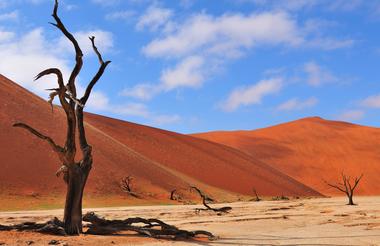
We leave the Namib this morning and head towards Namibia's other desert - The Kalahari.
Our destination is Bagatelle Kalahari Guest Farm which nestles between the red linear sand dunes that are typical of the Kalahari.
There are a number of activities on offer at Bagatelle and tonight we suggest a sundowner nature drive through the reserve in search of some of the resident wildlife including a variety of game species such as giraffes, kudus, zebras, oryx, eland antelopes and much more. Birds of prey are prevalent in the desert and Bagatelle is a haven for several species of owls.
On day 2 you can enjoy a walk with the local Bushmen or San people or enjoy a morning nature drive before the afternoon sundowner drive and an excursion to see the resident cheetahs.
Namibia is known for its fast predatory cats. We are committed to preserving these extraordinary creatures. Together with the CCF (Cheetah Conservation Fund), we offer these cheetahs a safe haven on our reserve. Here you have the rare opportunity to get up close and personal with these animals. Experienced gamekeepers will take you through the sand dunes to our cheetahs and answer all your questions.
If time permits then it is possible to join a night safari in search of some of the many nocturnal creatures that call the Kalahari their home including such Aardwolf, Aardvark, bat eared foxes, wild cats, honey badgers and owls .


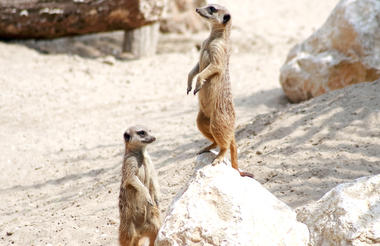
Sundowner nature drive and cheetah experience
After breakfast you'll leave the Kalahari and head back to Windhoek in good time to catch your onward flight home or you can choose to stay another in the city and fly out the following day.





